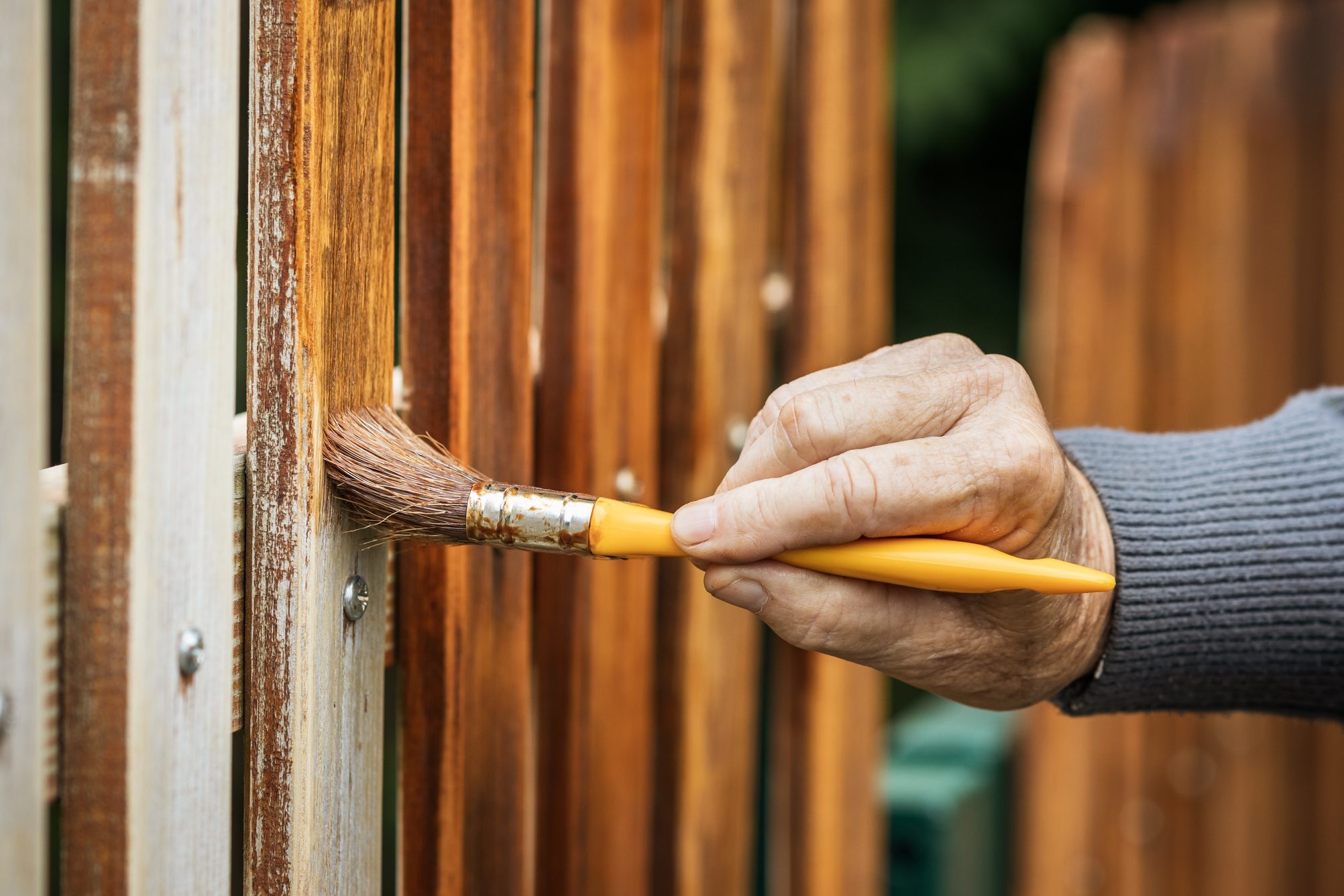Necessary Tips for Deck Discoloration Success
Attaining a faultlessly stained deck calls for more than just a brush and a can of stain. From selecting the appropriate type of discolor to mastering the art of application, each phase plays an important duty in the final end result.
Picking the Right Discoloration
Choosing the suitable stain is vital in achieving a durable and visually pleasing finish for your deck. deck staining near me. When selecting a stain for your deck, it is necessary to think about elements such as the wood kind, wanted color, level of defense needed, and upkeep preferences
Firstly, consider the kind of wood your deck is made of, as various wood species may react differently to particular kinds of stains. Hardwoods like oak or mahogany may call for various spots contrasted to softwoods like ache or cedar. Recognizing the characteristics of the wood will certainly help you pick a tarnish that passes through properly and enhances its natural charm.
Following, think of the shade you want for your deck. Spots come in a variety of hues, from natural tones that enhance the timber's grain to even more nontransparent shades that supply far better UV security. Choose a shade that matches your exterior area and matches your aesthetic preferences.
Furthermore, analyze the degree of protection the tarnish offers. Some discolorations offer extra substantial security versus UV rays, wetness, and mildew, which can extend the life of your deck. Balancing protection with aesthetic appeals is essential to attaining a long-lasting and aesthetically appealing surface.
Preparing the Deck Surface Area
To guarantee a successful application of the selected tarnish, extensive preparation of the deck surface area is vital. Make use of a deck cleaner or wood brightener along with a stiff-bristled brush to scrub the surface tidy.
Replace or repair these as needed to make sure the architectural stability of the deck. This step not just assists the stain stick much better but additionally improves the overall look of the deck.
Applying the Discoloration Appropriately

Begin by extensively blending the stain to make sure an also uniformity. Use a paint stirrer to mix the discolor well, page particularly if it has actually been sitting for a while. When using the stain, utilize a roller, paintbrush, or sprayer , relying on the kind of discolor and the dimension of the deck. Work in workable areas to protect against the stain from drying unevenly. Use the tarnish towards the timber grain to ensure even protection and a specialist coating.
Enable the very first coat to dry completely before making a decision if a 2nd layer is needed. Comply with the producer's instructions pertaining to drying out times and reapplication. Appropriate application go of the discolor is necessary for safeguarding your deck and enhancing its look for several years to find.
Maintaining Your Tarnished Deck
After effectively using the discolor to your deck, keeping its appearance and safety qualities is essential for lasting sturdiness and visual charm. Normal maintenance is vital to protecting the elegance and stability of your tarnished deck. To keep your deck looking its ideal, it is advised to clean it a minimum of annually. Use a light detergent and water to eliminate dust, crud, and mildew that can collect externally. Furthermore, evaluate your deck yearly for any kind of indications of wear or damages. Attending to problems quickly can avoid them from aggravating and extend the life of your tarnished deck. Relying on the foot web traffic and direct exposure to the aspects, you may require to reapply a fresh coat of discolor every 2-4 years. This will certainly help keep the color and safety surface of your deck, guaranteeing that it proceeds to enhance your outdoor area for several years to come.

Troubleshooting Common Issues
Determining and resolving usual problems that may arise with your discolored deck is important for guaranteeing its long life and optimal performance. One usual trouble is peeling or flaking of the tarnish.
Another problem usually experienced is mold and mildew and mold growth on the deck surface. This can be credited to moisture retention, absence of sunlight, or incorrect air flow. To tackle this trouble, a detailed cleaning with a mold and mold remover followed by appropriate drying out and application of a mold-resistant stain is critical.
Moreover, fading of the discolor shade in time is a widespread concern. UV direct exposure and rough weather can trigger staining. To address this, selecting a top notch, UV-resistant stain and applying a fresh layer periodically can aid preserve the deck's visual appeal.

Conclusion
To conclude, effective deck discoloration needs resource picking the appropriate stain, appropriately preparing the deck surface area, using the tarnish appropriately, and preserving the discolored deck. By complying with these necessary ideas, you can accomplish a perfectly tarnished deck that boosts the overall look of your outdoor space. Remember to troubleshoot any type of typical problems that may occur during the staining procedure to make sure a lasting and aesthetically enticing result.
Attaining a faultlessly tarnished deck requires even more than simply a brush and a container of tarnish.To guarantee an effective application of the chosen tarnish, extensive preparation of the deck surface is important. When using the discolor, make use of a sprayer, paintbrush, or roller , depending on the kind of discolor and the size of the deck.Identifying and addressing common problems that might occur with your discolored deck is essential for ensuring its durability and ideal efficiency.In verdict, effective deck discoloration requires choosing the best discolor, appropriately preparing the deck surface area, using the stain correctly, and maintaining the discolored deck.